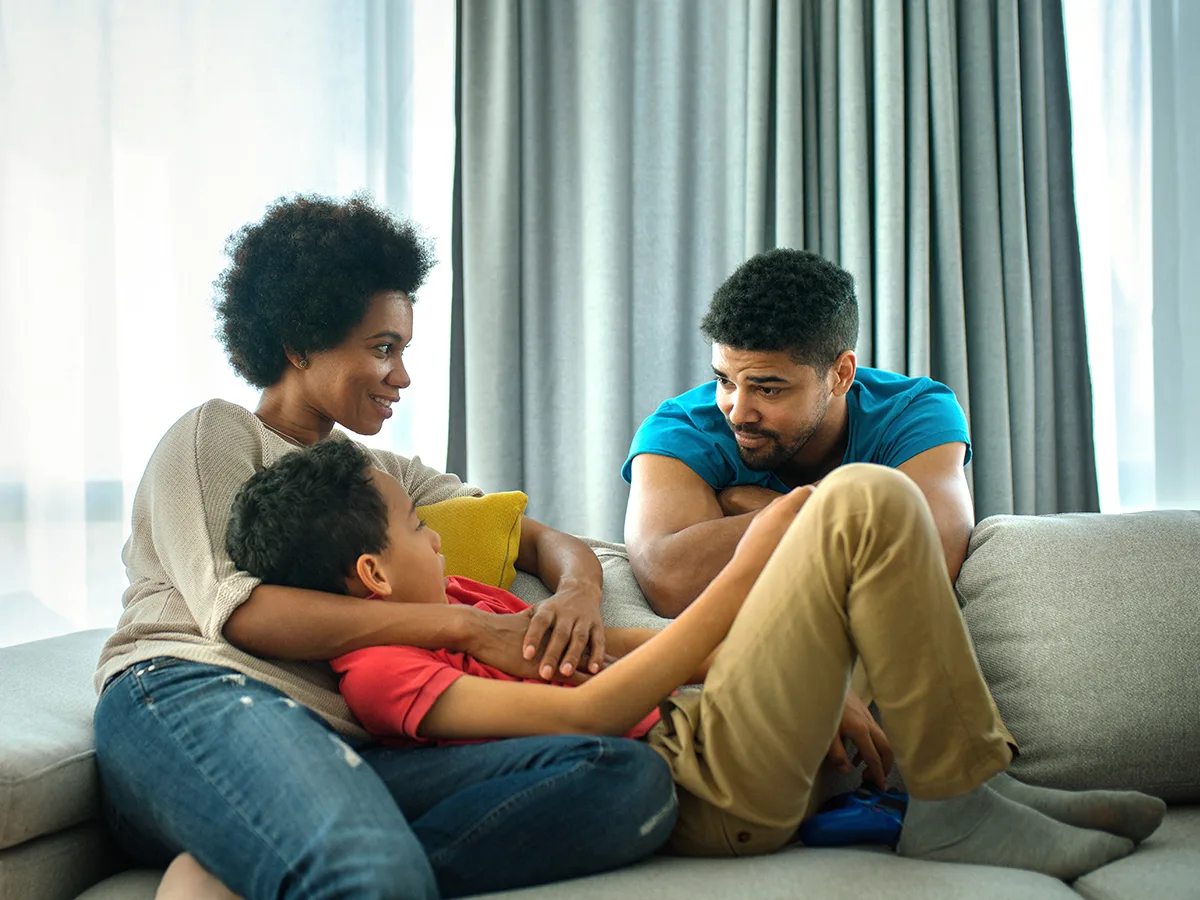7 ways to communicate with your child without yelling

Expert reviewed by Rayma Griffin, MA, MEd

At a glance
It’s normal to feel like you want to raise your voice during a stressful conversation.
There are lots of ways, other than yelling, to get your child’s attention.
Learning to model calm behavior will help you and your child connect.
Yelling at your child, losing your cool, raising your voice…. Pretty much every parent ends up doing it at some point.
But remember that your child will learn how to have productive conversations from watching you. During stressful discussions with kids, it’s important to remain respectful — and to expect respect in return.
Below are tips for how to make your point and teach healthy communication skills. To connect with other parents about how they’ve turned down the volume, join Understood’s Wunder app.
1. Take the opposite tone.
Shouting “Stop screaming at me!” when you’re arguing is unlikely to make anyone feel calmer. Model the kind of discussion skills you want your child to learn.
Try this: The louder your child gets, the softer the tone you use to respond. This can make you both feel calmer, and it demonstrates that raising your voice isn’t the way to solve problems. If your child has trouble with social cues like voice pitch and tone, you can show how your softer approach helped.
2. Be a broken record.
Sometimes there’s no room for negotiation on an issue. In these cases, use a calm, all-business tone and quietly repeat what you expect from your child. “Sorry, but when you hit, you sit.”
No matter their reaction, calmly repeat the same phrase as often as it takes. Eventually, your message will sink in. This may be especially useful with kids who have trouble remembering or paying attention to rules.
Find out how repeating instructions helped one mom finally get her child to listen.
3. Be positive — and clear.
Being clear and direct about what you want is important. So is using your child’s name when giving directions. This will get your child’s attention and make your message more personal.
This can be especially helpful for kids who have trouble with . Instead of snapping, “The Xbox belongs to the whole family!” try saying, “Tommy, it’s time to give your brother a turn now.”
4. Make it fun.
Defuse the intensity with some silliness. Instead of yelling for distracted (or hyperactive) toddlers to sit still so you can brush their teeth, try some gentle and fun nudging. “Quick, Nathan, I see Elmo in your mouth, and I need to brush him out. Oh, and Cookie Monster, too!”
5. Take a break.
If you feel like either of you is going to lose control, call a time-out and take a deep breath. Try saying something like, “Let’s both calm down. In 30 minutes, we can see if we’re ready to talk again.” Then each of you can head off to different rooms, cool off, and self-reflect.
Keep in mind that “self-reflection” can be a tricky skill for some kids who learn and think differently. But seeing how you model the behavior will help. If you’re in a public place, tell your child that the conversation is on pause until you’re in a quiet place, alone.
6. Control the conversation.
When a discussion is about to go off the rails, it’s important to take control of it. Unlike most kids, you have the grown-up self-awareness to stop and think: “Is what I’m about to say going to help or hurt this situation? What about how I’m about to say it?” You have the power to disengage, redirect, or restart the conversation more positively and productively.
7. Talk with others.
Parenting a child who learns and thinks differently presents unique challenges. It can help to connect to other parents who’ve “been there, done that.” For instance, you can connect with other parents in our Wunder community app. It’s free and can also direct you to support groups and specialists. Having someone who understands what you’re going through can help you stay calm when an argument with your child is brewing.
Key takeaways
There are many ways to defuse stressful conversations with kids.
Taking a time-out, changing your tone, or acting silly can help.
Remember: You’re not alone. Connect with other parents who know what you’re going through.


